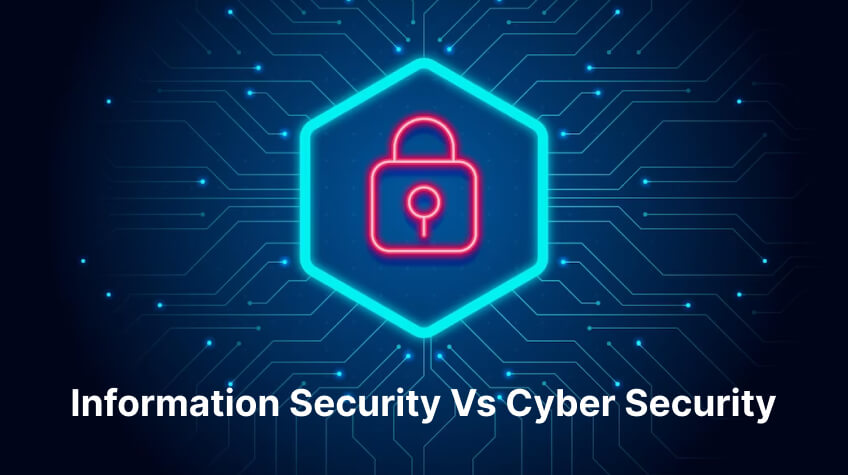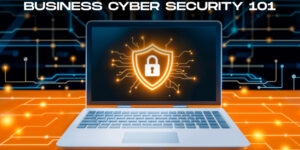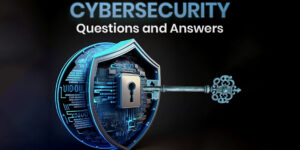
Cyber security is a premise well-known by most internet users today. It refers to more than the firewalls separating malicious viruses from your computer; it also refers to preserving intimate knowledge in cyberspace.
In comparison, there is also information security. This security refers to protecting all your information, regardless of whether it is in cyberspace—for example, intangible elements like key personnel positions or prototypes.
Information security and cyber security are completely different things but have the same level of importance. The confidentiality, integrity, and preservation of information are controlled via these security measures—which means they overlap and are an integral part of any online IT degree program. Read on to learn more about each and see examples of their specialized domains.
What Exactly is Information Security?
Information security does not only deal with cyberspace but even with tangible, “analog” items. Data security concerns any aspect of a business that should be confidential.
These concerns include models, floor plans, partnerships, and employee information. Information security is meant to fulfill the needs of a business’s confidentiality, integrity, and availability, blocking unauthorized access, protectively storing data, and providing emergency accessibility to authorized personnel. Information security professionals are trained to prioritize resources above and before removing threats.
Examples of Information Security
Information security can take many forms; examples of its procedures span more than unauthorized access, disruption, and confidential materials. Information security protects all data, regardless of analog or digital threats:
- Poor end-point user security may cause security focused on password policy and follow-up staff awareness training.
- They may create impact assessments detailing the current security climate for the company and across the industry.
- As simple as it might sound, they may also create key cards for physical locations and install locks for vaults containing confidential information.
- Emergency plans are also the work of information security in the form of operational procedures and proactive assessments.
- Network intrusion detection systems are one crucial element they share with cyber security; the difference is that information security is concerned with physical intrusion and injection viruses.
- Access Controls are an essential part of information security. They involve the use of passwords, PINs, and other authentication mechanisms to restrict access to sensitive data to authorized personnel only. Access controls can also be implemented at the physical level, such as using key cards to access certain areas of the building.
What is Cyber Security?
Cyber security, in contrast, is concerned only with protecting electronic data, networks, systems, and threats. Cyber security threats include malware intrusion and technical vulnerabilities that cause exploits and lots of damage.
Cyber security experts mainly focus on defending computers, servers, devices, networks, and data from cyber criminals. The physical storage of data is also essential because those experts must account for more evidence. If an attack occurs, they are responsible for operational security and disaster recovery.
Examples of Cyber Security
Cyber security relies on more advanced tools than an “industry standard.” As more data becomes digital, cyber security is a necessity to keep it protected. Cyber security identifies and secures critical data, assesses its exposure risk, and implements tools for protection:
- They may implement anti-malware software or other defenses against malicious online accounts. These can help stop viruses, API injections, and phishing attempts.
- They should create a secure code review and apply an active password policy. Code review examines an application’s source code for flaws or exploits. At the same time, an active password policy involves chronic, up-to-date, and well maintained employee password management.
- They also oversee employee device behavior and multi-factor authentication on those devices. Multi-factor authentication is the biggest factor in many user-end data failures; more bluntly, not having it is costly.
- Cyber security experts also oversee company-wide VPNs. Virtual Private Networks (VPNs) are necessary security features that disrupt the real-world knowledge a hacker can access.
- They are also in control of response and recovery. The response includes running inquiries with investigative elements (like IP spoofing), while recovery includes company reaction publicly and internally.
- Penetration testing, also known as “pen testing,” is a simulated cyber-attack on a computer system or network to identify security weaknesses that could be exploited by hackers.
Where do Cyber Security and Information Security Overlap?
Tasking a person to do both roles is not advisable. While there are many overlaps in both areas, there are undeniable differences. Developing a comprehensive cybersecurity framework involves not only addressing external risks but also implementing an effective insider threat program to mitigate potential vulnerabilities originating from within the organization.
Identifying the data that is essential to our business and securing it are their overlapping components. They incorporate security features into their data to protect sensitive and important data. They also have similar network and online issues.
Surfing the deep web while working in the office is a concern. Although this is an issue that needs to be dealt with, employers must be illuminated about the misconception of deep web vs dark web, the differences, and how conducting a deep web search can be advantageous, but still carries some cyber security weight.
RELATED: Essential Practices To Improve Your Website Security
Difference Between Information Security and Cyber Security
These securities’ primary distinction and difference is their physical obligations. Information security must consider physical threats and risks to the company; cyber security must protect or correctly dispose of all physical data.
Only a small number of businesses need both experts because it’s a subtle difference.. Companies often hire for one role, and one person handles both responsibilities.
Despite their differences, both information security and cyber security professionals share a common goal of protecting a company’s critical data. They must work together to define what data is critical to the organization and how best to protect it from unauthorized access or theft. They must also collaborate to address network and internet concerns, such as preventing employees from accessing the deep web during work hours.
Conclusion
Information security and cyber security have many aspects that overlap—they are both concerned with the safety of a company’s data and are a must in upholding the safety of a company’s information wealth and reputation.
Despite similarities, they shouldn’t be confused about the same thing. Understanding their differences will allow you to create a safer, lower-risk target for any organization.






